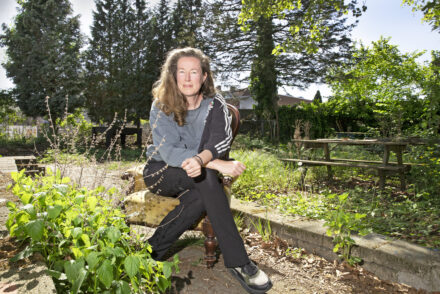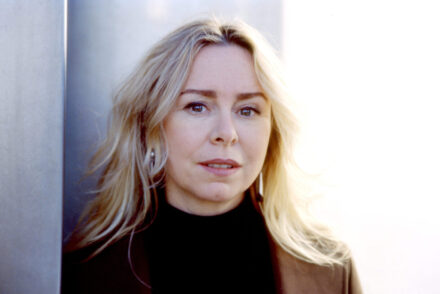Closing the year with the Top 2000: ‘Music gives people something to hold on to in uncertain times’
It is a fixed ritual at the end of the year. The Top 2000. Sociologist Bram Peper is a fanatic dj in his spare time and a big fan of the list of lists. What does he think makes the annual musical countdown so popular?

‘Anywhere the wind blows….’ ‘Boing,’ the gong sounds softly and then the countdown to the new year begins. ‘Ten, nine, eight, … three, two, one. Happy New Year!’ In many living rooms, the last moments of the old year, before the fireworks really break loose, follow the same tried and tested pattern. The Top 2000 is the traditional prelude to twelve o’clock, because music connects.
Catalyst
The countdown even starts at Christmas. ‘During the dark days around Christmas, we spend more time musing about the year that is behind us and life in general. In the winter months, you may feel a bit lost,’ Peper thinks.
‘Memories can give a connection with others. And a song you hear can swing you back to a certain period, where you suddenly think back to certain people or situations. Music is a very strong catalyst to evoke certain memories or emotions.’
Young people
Although the Top 2000 contains many classic pop and rock songs, the list has many young listeners. Peper: ‘Most listeners fall into the category of thirty to sixty years, which is of course Radio 2’s target group. But young people also listen to the Top 2000. And they don’t vote much more modern or progressive than older people.
‘If you’re a student in your twenties now, ten years ago you might have sat next to your parents with combed hair in your pajamas listening to the Top 2000. Back then, Bohemian Rhapsody was also number one, and that is a form of nostalgia for some. If you listen to the Top 2000, then traditional Bohemian Rhapsody is part of it.’
Nostalgia
Peper tries to interpret the phenomenon of nostalgia scientifically. He wrote the chapter Then happiness becomes very ordinary again. Nostalgia, uncertainty and the desire for change with fellow sociologist Peter Achterberg in the book New certainties in uncertain times.
Peper: ‘Nostalgia is the longing for a certain time. This phenomenon was first described a few centuries ago by a Swiss doctor, as a clinical picture. He found it especially among sailors and soldiers as a painful longing for home, i.e. for a certain place. Now we call it homesickness. Nostalgia took on a different meaning and became a longing for the past,’ says Peper. ‘Longing for a certain time’.
‘Homesickness can be cured by going back to the place you long for. But returning to a certain time is much more difficult. At the time, the Swiss doctor mainly emphasized the negative consequences of nostalgia, especially the physical defects. In the past century, we have transformed nostalgia into a positive feeling.’
Grip
People can also experience nostalgia as a medicine for anomie, a term from sociology that is related to the concept of alienation. Peper: ‘Anomie arises when people get the feeling that it is no longer clear what is right and wrong, what rules apply in society. This phenomenon occurs in times of rapid change.
‘Corona is a good example, or the war in Ukraine. And these are rather uncertain times for young people with student debt or with few opportunities on the housing market. Then people look for something to hold on to in familiar and recognizable things. Music can be a reaffirmation of who you are in society, a foothold, a rock.’
Revival of revivals
Peper, who is not only a scientist but also a disc jockey, has fond memories of the black soul music of the seventies. Peper: ‘The first Friday after New Year’s Eve we always play records in my radio program that are not in the Top 2000. And every year it becomes more painful that big black artists no longer get in. That’s a shame, because black music is the cradle of a lot of contemporary music.
The Top 2000 has quite a number of regular classics, but looks different every year. ‘The funny thing is that pop music repeats itself every fifteen or twenty years,’ says Peper. ‘About twenty years ago, the 80’s and 90’s parties emerged, and in the eighties soul from the 60’s became popular again through the commercials of a jeans brand, with Reet Petite by Jackie Wilson and My Baby Just Cares For Me by Nina Simone.’
At the time, it was mainly radio and television, but now other media are causing revivals. Peper: ‘Because of the series Stranger Things, Kate Bush suddenly became popular again with the forty-year-old song Running Up That Hill. And games like Grand Theft Auto and social media like TikTok are now also very important in putting old songs back in the spotlight.’






